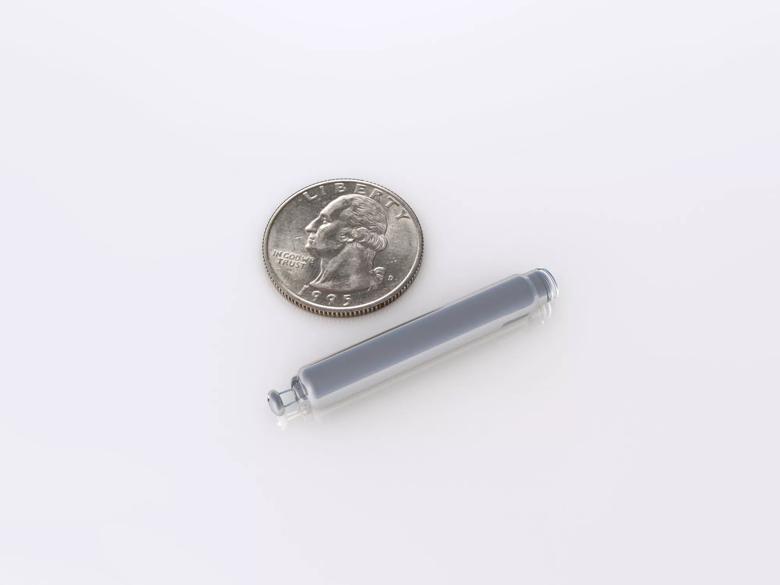Research finds leadless pacemakers reduced complications up to 18 months, eliminated pocket and lead related problems
Cleveland Clinic News Service | 216.444.0141
We’re available to shoot custom interviews & b-roll for media outlets upon request.
CCNS health and medical content is consumer-friendly, professional broadcast quality (available in HD), and available to media outlets each day.
images: 0
video: 0
audio: 0
text: 0

Patients receiving leadless pacemakers experience overall fewer short-term and mid-term complications than those receiving traditional transvenous pacemakers, a Cleveland Clinic-led research study found. The study was published today in the journal Heart Rhythm.

Approximately one million pacemakers are implanted annually, providing electrical stimulation to regulate a patient’s heartbeat.
Conventional pacemakers are surgically placed under the skin of a patient’s chest, with wires, or leads, stretching from the shoulder vein and attaching to the heart. These wires and the surgical implantation are the most common source of complications, occurring in up to 12 percent of device recipients, according to previous research.
Leadless pacemakers, by contrast, do not need wires. The small self-contained devices – about 10 percent of the size of a traditional pacemaker – are placed directly into the heart using a catheter passed through the femoral vein in the leg. Leadless pacemakers were introduced in 2014, and the first leadless pacemaker was approved by the FDA in 2016.
The new multi-center study compared short- and mid-term complications between 718 patients receiving the Nanostim leadless pacemaker and 1,436 patients with conventional (transvenous) pacemakers. Leadless pacemaker patient data was taken from the LEADLESS II trial, a prospective, nonrandomized, multicenter clinical trial. Transvenous patient data were obtained from Truven Health MarketScan claims databases for patients implanted with single-chamber pacemakers between April 2010 and March 2014 and more than 1 year of pre-implant enrollment data. Statistical methods were used to match patients between the two groups to compare the outcomes of a leadless vs. traditional pacemaker with other key clinical variables being equal.
At one month, the study found that patients receiving one type of leadless pacemaker (Nanostim) overall had fewer complications (5.8 percent vs. 9.4 percent). Leadless pacemakers completely eliminated lead and pocket complications, including infection. By comparison, complications among traditional pacemaker recipients included lead complications (3.62 percent), pocket complications (0.42 percent) and infection (1.74 percent). There were no significant differences between the groups in regard to rates of vascular complications, electrode dislodgement and generator complications.
However, the study did find that those receiving leadless pacemakers had an increased risk of developing pericardial effusion – bleeding between the heart and the sac that surrounds the heart (1.53 percent vs. 0.35 percent). These complications were uncommon but serious, and sometimes required surgery.
Beyond one month and up to 18 months of follow-up, leadless patients continued to experience overall fewer complications than transvenous patients (0.56 percent vs. 4.94 percent). In the conventional pacemaker group, there were a number of complications wholly absent from the leadless group, including lead-related complications, electrode dislodgement, infection and pocket complications.
“The data from this study is encouraging, and we expect complications from leadless pacemakers to continue to decline as the technology improves and physicians gain experience implanting these devices,” said Daniel Cantillon, M.D., research director for Cardiac Electrophysiology and Pacing at Cleveland Clinic and lead author of the study. Dr. Cantillon is a consultant for Abbott and Boston Scientific. “While this research shows benefit for leadless pacing, we must keep in mind that the field is still too young to compare the long-term results of this technology, the implications of which will not be fully understood for at least another decade.”
Cleveland Clinic is a nonprofit multispecialty academic medical center that integrates clinical and hospital care with research and education. Located in Cleveland, Ohio, it was founded in 1921 by four renowned physicians with a vision of providing outstanding patient care based upon the principles of cooperation, compassion and innovation. Cleveland Clinic has pioneered many medical breakthroughs, including coronary artery bypass surgery and the first face transplant in the United States. Cleveland Clinic is consistently recognized in the U.S. and throughout the world for its expertise and care. Among Cleveland Clinic’s 82,600 employees worldwide are more than 5,786 salaried physicians and researchers, and 20,700 registered nurses and advanced practice providers, representing 140 medical specialties and subspecialties. Cleveland Clinic is a 6,728-bed health system that includes a 173-acre main campus near downtown Cleveland, 23 hospitals, 280 outpatient facilities, including locations in northeast Ohio; Florida; Las Vegas, Nevada; Toronto, Canada; Abu Dhabi, UAE; and London, England. In 2024, there were 15.7 million outpatient encounters, 333,000 hospital admissions and observations, and 320,000 surgeries and procedures throughout Cleveland Clinic’s health system. Patients came for treatment from every state and 112 countries. Visit us at clevelandclinic.org. Follow us at x.com/CleClinicNews. News and resources are available at newsroom.clevelandclinic.org.
Editor’s Note: Cleveland Clinic News Service is available to provide broadcast-quality interviews and B-roll upon request.